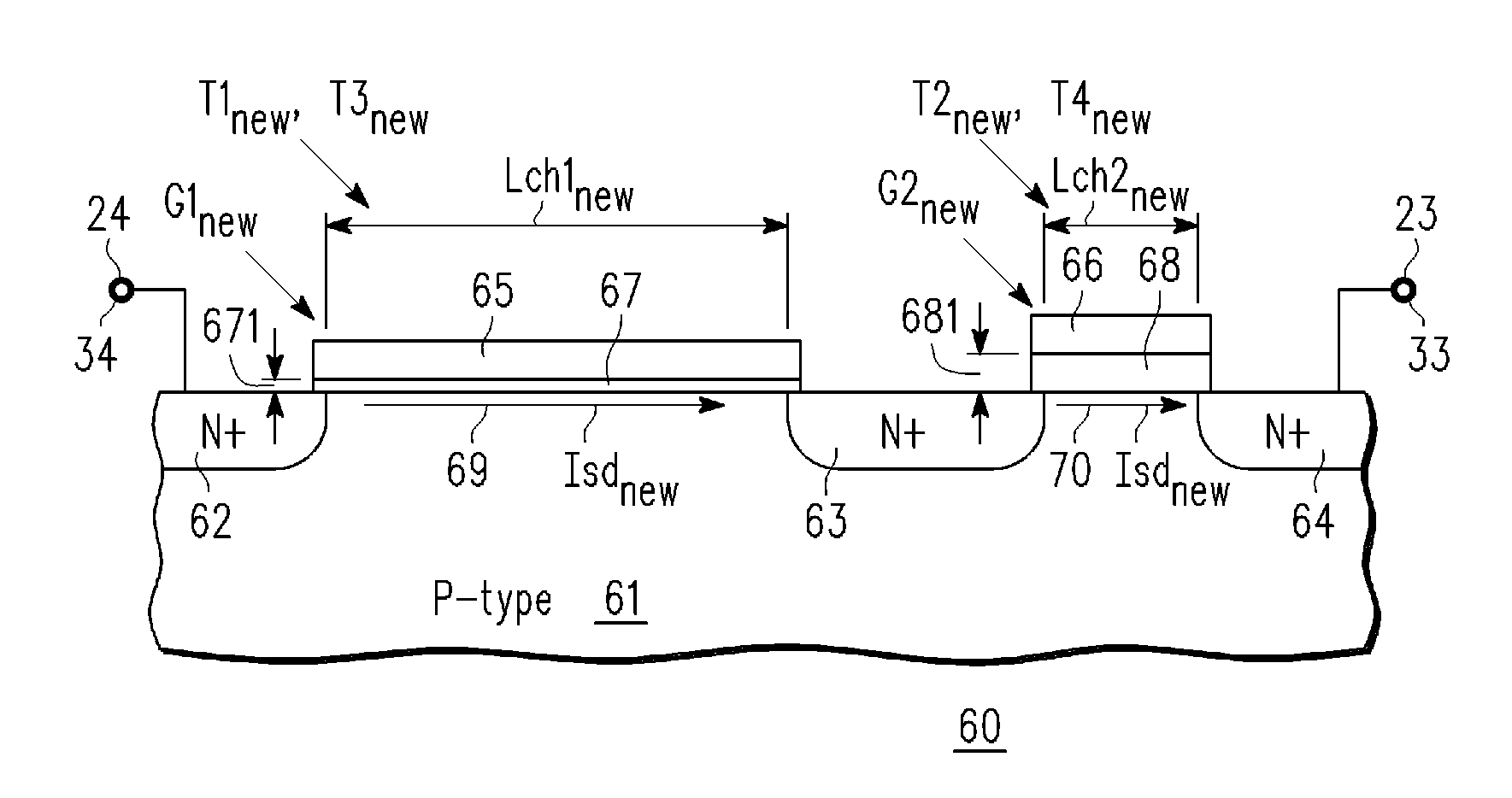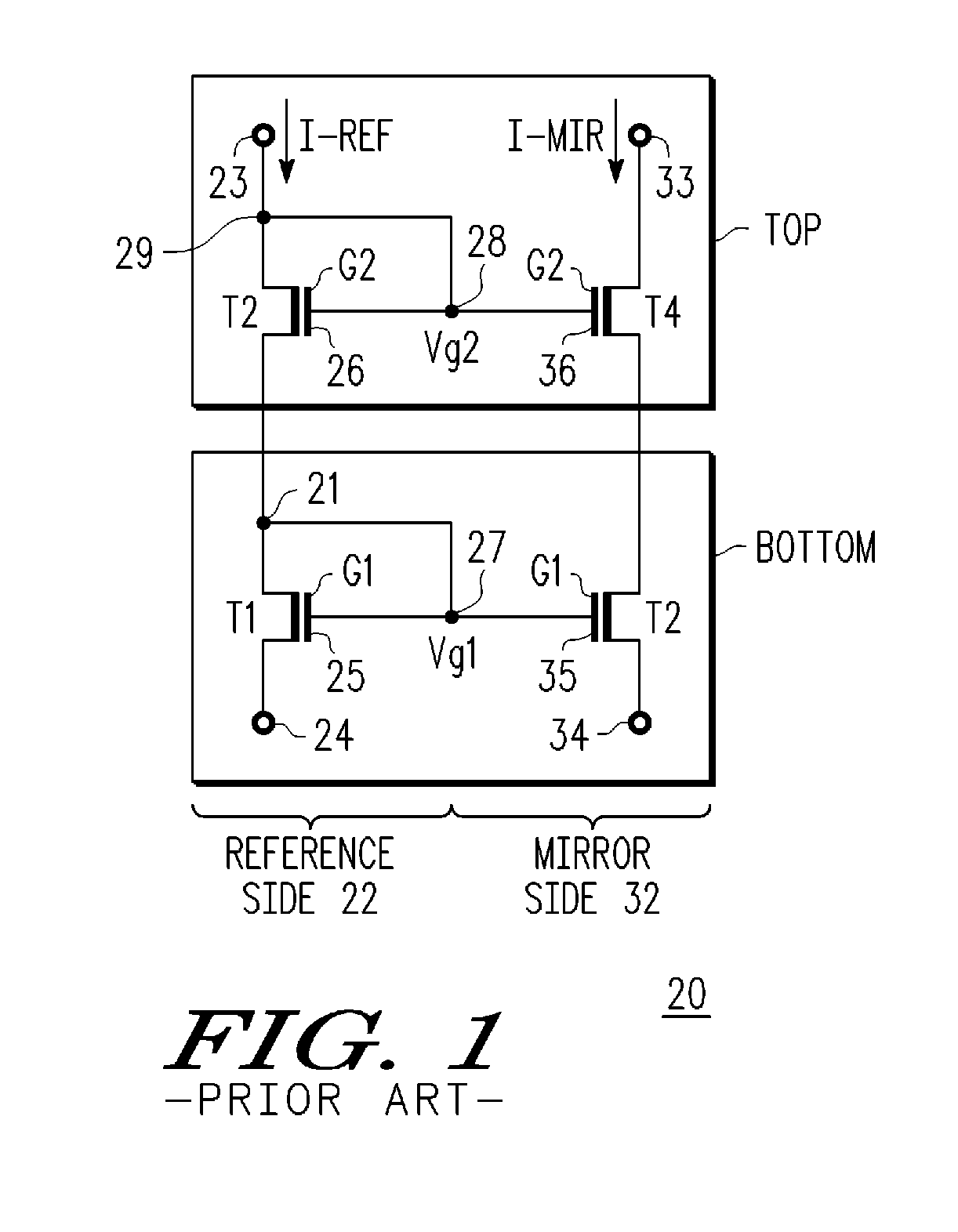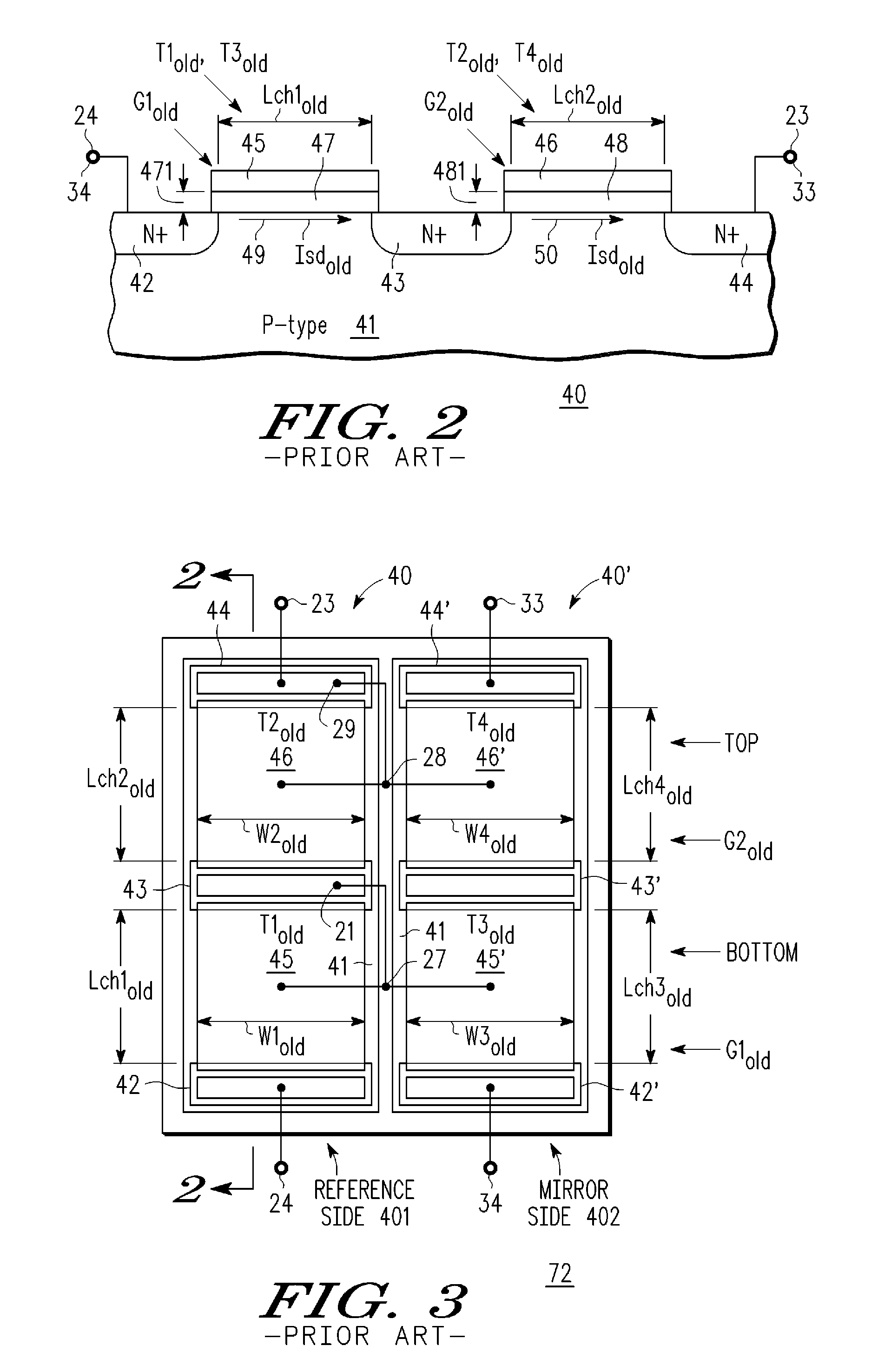Cascode current mirror and method
a current mirror and cascode technology, applied in the field of semiconductor devices for fabricating semiconductor devices, can solve the problems of current mirror matching between the devices that make up reference and current mirror, noise performance worsening, and the trend of reducing supply voltag
- Summary
- Abstract
- Description
- Claims
- Application Information
AI Technical Summary
Benefits of technology
Problems solved by technology
Method used
Image
Examples
first embodiment
[0044] there is provided a cascode current mirror device, comprising, first and second series coupled MOS transistors adapted to form a reference current path of the current mirror device, wherein the first and second transistors have first and second gates overlying first and second gate dielectrics of first and second thicknesses, respectively, and the first and second transistors have first and second channel lengths and channel widths, respectively, and each transistor has a source and a drain and the source of the first transistor forms a first node, the drain of the first transistor is coupled to the source of the second transistor at a second node and the drain of the second transistor forms a third node, and wherein the current mirror device is adapted to have a reference current flow between the first and third nodes, and third and fourth series coupled MOS transistors adapted to form a mirror current path of the current mirror device, wherein the third and fourth transisto...
second embodiment
[0045] there is provided a method for forming a cascode current mirror using MOS transistors, comprising, providing a semiconductor substrate of a first conductivity type, and forming a first dielectric layer on a first portion of the semiconductor substrate, and forming a second dielectric layer on a second, different, portion of the semiconductor substrate and thinner than the first dielectric layer and forming a conductor over the first and second dielectric layers, and forming from the conductor, first and third spaced apart gates on the second dielectric layer over the second portion of the semiconductor substrate and second and fourth spaced apart gates on the first dielectric layer over the first portion of the semiconductor substrate, and doping multiple spaced apart regions of the substrate with a dopant of a second, opposite conductivity type, thereby forming source and drain regions in the substrate, wherein a first source regions is adjacent a first lateral side of the f...
third embodiment
[0046] there is provided a cascode current mirror, comprising, first and second series coupled MOSFETs, each MOSFET having source, drain, gate and gate dielectric, wherein the drain of the first MOSFET is coupled to the source of the second MOSFET and the first and second series coupled MOSFETS are adapted to provide a reference current path between a source of the first MOSFET and a drain of the second MOSFET, and third and fourth series coupled MOSFETs, each MOSFET having source, drain, gate and gate dielectric, wherein the drain of the third MOSFET is coupled to the source of the fourth MOSFET and the third and fourth series coupled MOSFETS are adapted to provide a mirror current path between a source of the third MOSFET and a drain of the fourth MOSFET, and wherein gates of the first and third MOSFETs are coupled together and to the drain of the first MOSFET and gates of the second and fourth MOSFETs are coupled together and to the drain of the second MOSFET, and wherein the gat...
PUM
 Login to View More
Login to View More Abstract
Description
Claims
Application Information
 Login to View More
Login to View More - R&D
- Intellectual Property
- Life Sciences
- Materials
- Tech Scout
- Unparalleled Data Quality
- Higher Quality Content
- 60% Fewer Hallucinations
Browse by: Latest US Patents, China's latest patents, Technical Efficacy Thesaurus, Application Domain, Technology Topic, Popular Technical Reports.
© 2025 PatSnap. All rights reserved.Legal|Privacy policy|Modern Slavery Act Transparency Statement|Sitemap|About US| Contact US: help@patsnap.com



